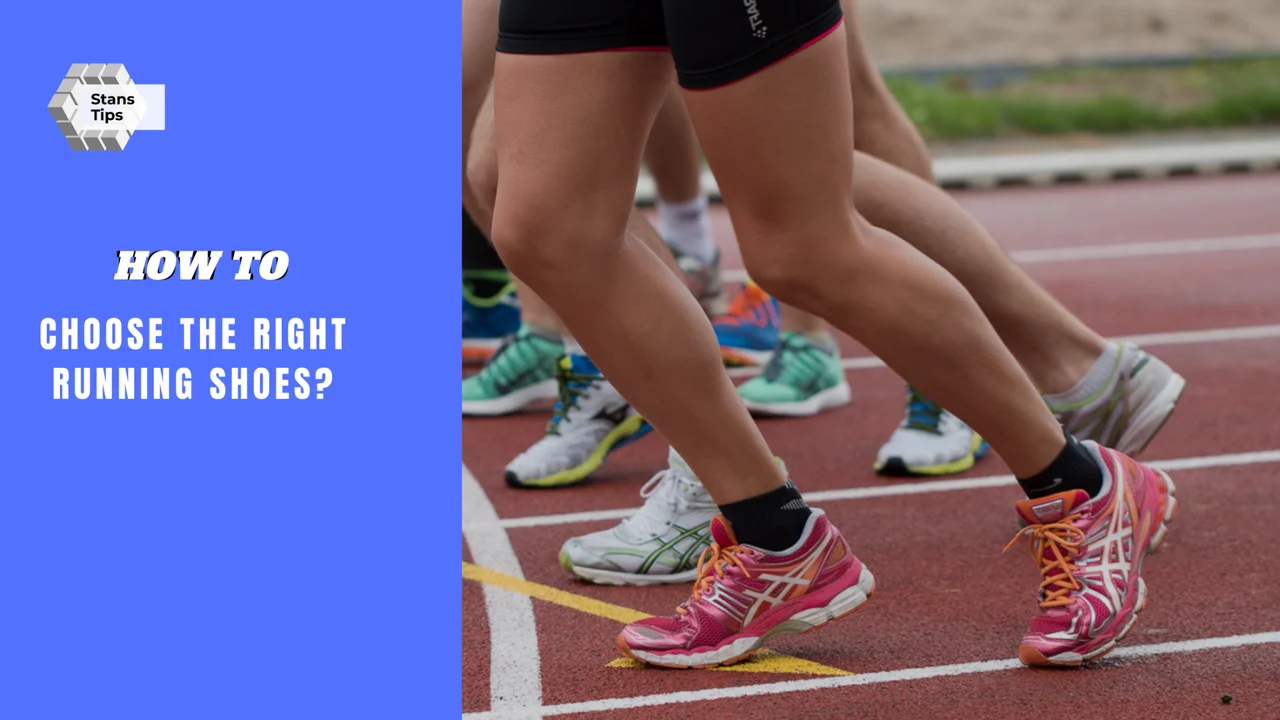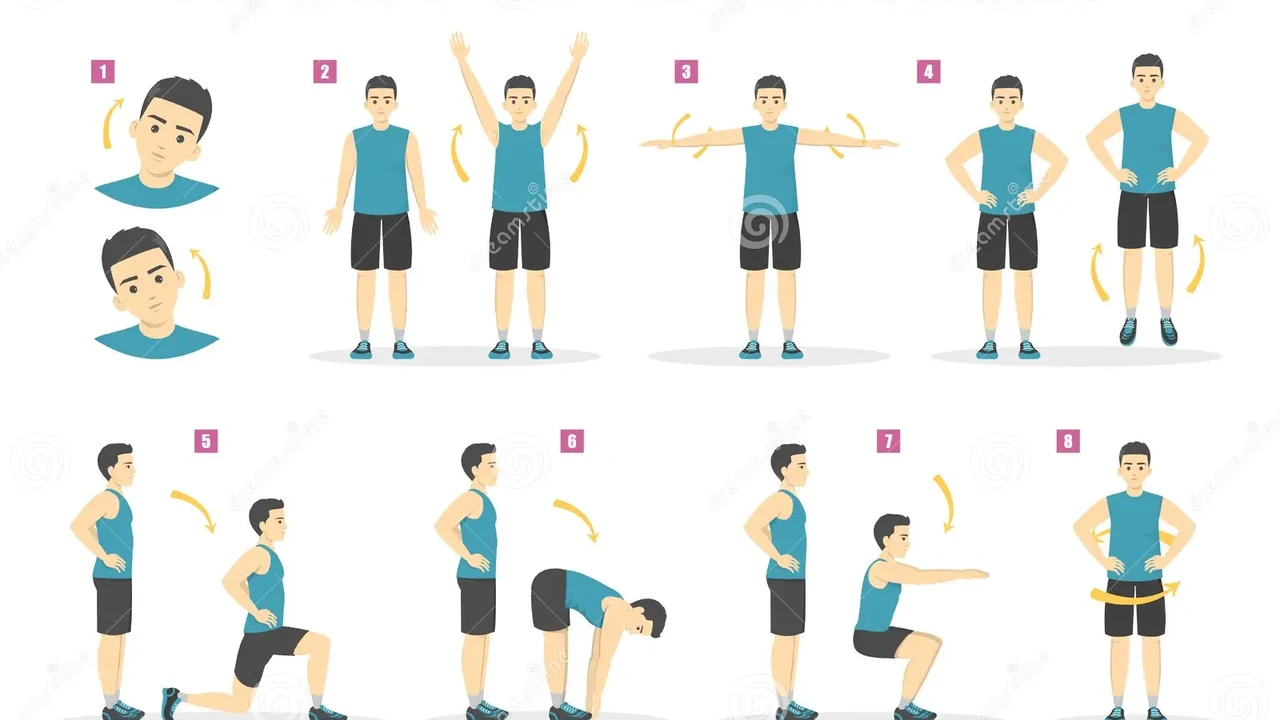How to Choose the Right Running Shoes
Sample meta description.

Understanding Your Foot Type and Gait for Optimal Running Shoe Selection
Okay, so you're ready to lace up and hit the pavement (or the trail, or the treadmill!). Awesome! But before you drop some serious cash on a shiny new pair of running shoes, let's talk about something super important: your foot type and gait. Ignoring this is like trying to assemble IKEA furniture without the instructions – you might get it done, but it's probably going to be wobbly and frustrating.
Your foot type basically refers to the arch of your foot. We're talking about three main categories here:
- Neutral Arch: You have a good balance between pronation and supination (we'll get to those in a sec). Your arch provides adequate support and shock absorption.
- Flat Feet (Overpronation): Your arch is lower, and your foot tends to roll inward excessively when you run. This can lead to injuries like shin splints and plantar fasciitis.
- High Arch (Supination/Underpronation): Your arch is higher, and your foot doesn't roll inward enough. This can put extra stress on your ankles and knees.
So, how do you figure out your foot type? The easiest way is the "wet foot test." Wet the bottom of your foot and step onto a piece of dark paper or cardboard. Look at the footprint you leave behind:
- Full Footprint: Likely you have flat feet (overpronation).
- Half Footprint: You probably have a neutral arch.
- Very Little Footprint (mostly heel and forefoot connected by a thin line): You likely have a high arch (supination/underpronation).
Now, let's talk about gait. Gait refers to the way your foot strikes the ground and rolls during your stride. Pronation is the natural inward rolling of the foot after landing. Supination is the opposite – the outward rolling of the foot. Ideally, you want a neutral gait, where your foot pronates just enough to absorb shock. Overpronation and supination can both lead to problems.
A running store with knowledgeable staff can analyze your gait using a treadmill and video recording. They can then recommend shoes that are specifically designed to support your foot type and gait. This is *highly* recommended, especially if you're new to running or prone to injuries.
Choosing Running Shoes Based on Running Surface and Intended Use
Where are you planning on logging those miles? Are you a road warrior, a trail blazer, or a treadmill enthusiast? The surface you run on makes a big difference in the type of shoe you should choose. And what about the type of running? Are you training for a marathon, doing speed work, or just going for leisurely jogs?
- Road Running Shoes: Designed for smooth, paved surfaces. They typically have more cushioning and flexibility than trail shoes.
- Trail Running Shoes: Designed for uneven, off-road terrain. They have more aggressive tread for better traction, and often feature rock plates to protect your feet from sharp objects.
- Track Spikes: For track and field events. These have spikes on the sole for maximum grip and speed on the track.
- Cross-Training Shoes: More versatile and suitable for a variety of activities, including running, but not ideal for long-distance running.
Beyond the terrain, think about the type of running you'll be doing. For long-distance training, you'll want shoes with ample cushioning. For speed work, you might want lighter, more responsive shoes. And for everyday jogging, a good all-around shoe will suffice.
Understanding Running Shoe Terminology: Drop, Cushioning, and Support
Running shoe descriptions can sound like a foreign language! Let's break down some key terms:
- Heel-to-Toe Drop (or simply "Drop"): The difference in height between the heel and the forefoot. A higher drop (e.g., 10-12mm) can reduce stress on the Achilles tendon, while a lower drop (e.g., 0-4mm) can encourage a more natural midfoot strike.
- Cushioning: The amount of padding in the midsole. More cushioning generally means more comfort and shock absorption, but can also make the shoe feel less responsive.
- Support: Refers to features that help control pronation. Stability shoes offer more support than neutral shoes.
- Midsole: The layer of material between the upper and the outsole that provides cushioning and support. Common midsole materials include EVA (ethylene-vinyl acetate) and TPU (thermoplastic polyurethane).
- Outsole: The bottom layer of the shoe that provides traction and durability.
- Upper: The part of the shoe that covers the top of your foot. Uppers are typically made of mesh or synthetic materials.
Knowing these terms will help you understand the features of different shoes and choose the right one for your needs.
Top Running Shoe Recommendations for Different Runners and Their Specific Needs
Alright, let's get down to brass tacks. Here are a few recommendations based on different needs and running styles. Keep in mind that shoe fit is *highly* personal, so it's always best to try them on before you buy. Prices are approximate and can vary depending on the retailer and sales.
For Neutral Runners (Road): Brooks Ghost 15
The Brooks Ghost 15 is a classic neutral running shoe known for its smooth ride and comfortable cushioning. It's a great all-around shoe for everyday training and long runs.
- Use Case: Daily training, long runs, recovery runs.
- Surface: Road, treadmill.
- Features: DNA LOFT v2 cushioning, Segmented Crash Pad for smooth transitions.
- Pros: Comfortable, durable, versatile.
- Cons: Not the most exciting shoe, can feel a bit heavy for speed work.
- Price: Approximately $140.
For Overpronators (Road): ASICS GEL-Kayano 29
The ASICS GEL-Kayano 29 is a stability shoe designed to control overpronation. It provides excellent support and cushioning, making it a good choice for runners who need extra stability.
- Use Case: Daily training, long runs, stability.
- Surface: Road, treadmill.
- Features: GEL cushioning, Dynamic DuoMax Support System, Space Trusstic System.
- Pros: Excellent support, comfortable cushioning, durable.
- Cons: Can feel a bit stiff, not ideal for neutral runners.
- Price: Approximately $160.
For Trail Runners: Salomon Speedcross 6
The Salomon Speedcross 6 is a popular trail running shoe known for its aggressive grip and protective features. It's a great choice for runners who tackle challenging terrain.
- Use Case: Trail running, hiking, off-road adventures.
- Surface: Trails, mud, rocks.
- Features: Aggressive Contagrip outsole, Quicklace system, SensiFit technology.
- Pros: Excellent grip, protective, comfortable.
- Cons: Not ideal for road running, can feel a bit narrow.
- Price: Approximately $140.
For Speed Work: Saucony Kinvara 14
The Saucony Kinvara 14 is a lightweight and responsive running shoe designed for speed work and racing. It offers a good balance of cushioning and responsiveness.
- Use Case: Tempo runs, interval training, races.
- Surface: Road, track.
- Features: PWRRUN cushioning, Formfit technology, lightweight design.
- Pros: Lightweight, responsive, comfortable.
- Cons: Not as durable as other shoes, less cushioning than daily trainers.
- Price: Approximately $120.
For Budget-Conscious Runners: New Balance Fresh Foam Arishi v4
The New Balance Fresh Foam Arishi v4 is a great budget-friendly option for runners who are looking for a comfortable and versatile shoe.
- Use Case: Daily training, walking, gym workouts.
- Surface: Road, treadmill, gym.
- Features: Fresh Foam cushioning, breathable mesh upper.
- Pros: Affordable, comfortable, versatile.
- Cons: Not as durable as other shoes, less cushioning than premium models.
- Price: Approximately $70.
Comparing Running Shoe Brands: Nike, Adidas, Brooks, ASICS, and More
The running shoe market is crowded! Here's a quick rundown of some popular brands and their strengths:
- Nike: Known for their innovative technologies, stylish designs, and a wide range of shoes for different runners. Good for speed, style, and innovation. Price range: $100 - $250+.
- Adidas: Similar to Nike, Adidas offers a variety of running shoes with innovative technologies and stylish designs. Their Boost cushioning is particularly popular. Good for comfort, style, and Boost technology. Price range: $100 - $200+.
- Brooks: Focuses on providing comfortable and reliable running shoes for all types of runners. They are known for their neutral shoes and their commitment to sustainability. Good for comfort, reliability, and sustainability. Price range: $120 - $180.
- ASICS: Known for their stability shoes and their GEL cushioning technology. They are a good choice for runners who need extra support. Good for stability, cushioning, and support. Price range: $100 - $200.
- Saucony: Offers a range of running shoes for different types of runners, from lightweight racers to cushioned daily trainers. Good for lightweight racers and cushioned trainers. Price range: $100 - $160.
- New Balance: Known for their comfortable and well-made running shoes, with a focus on fit and quality. Good for fit, quality, and comfort. Price range: $80 - $180.
- Hoka One One: Known for their maximalist cushioning and their unique designs. Their shoes are a good choice for runners who want a lot of cushioning. Good for maximalist cushioning and unique design. Price range: $140 - $200+.
- Salomon: Specializes in trail running shoes and outdoor gear. Their shoes are known for their aggressive grip and protective features. Good for trail running and aggressive grip. Price range: $120 - $200+.
Finding the Right Fit: Tips for Trying on Running Shoes
Trying on running shoes is crucial! Here are a few tips to ensure you get the right fit:
- Go to a specialty running store: The staff can analyze your gait and recommend shoes that are specifically designed for your needs.
- Shop in the afternoon or evening: Your feet tend to swell throughout the day, so it's best to try on shoes when your feet are at their largest.
- Wear the socks you plan to run in: This will ensure that the shoes fit properly.
- Try on both shoes: Don't just try on one shoe! Walk around and see how they feel.
- Make sure there's enough room in the toe box: You should have about a thumb's width of space between the end of your longest toe and the end of the shoe.
- Pay attention to the heel: Your heel should fit snugly in the heel cup, without slipping.
- Don't be afraid to ask questions: The staff at the running store are there to help you find the perfect shoe.
- Trust your gut: If a shoe doesn't feel right, don't buy it!
Extending the Life of Your Running Shoes: Care and Maintenance
You've invested in a great pair of running shoes, so you want them to last! Here are a few tips for extending their lifespan:
- Rotate your shoes: If you run frequently, it's a good idea to have two pairs of running shoes and rotate them. This will allow the cushioning to recover between runs.
- Clean your shoes regularly: Wipe down your shoes with a damp cloth after each run. For more thorough cleaning, you can hand wash them with mild soap and water.
- Air dry your shoes: Never put your running shoes in the dryer! The heat can damage the cushioning.
- Store your shoes in a cool, dry place: Avoid storing your shoes in direct sunlight or in a damp environment.
- Replace your shoes every 300-500 miles: The cushioning in running shoes breaks down over time, so it's important to replace them regularly. Pay attention to how the shoes feel – if they feel less cushioned or supportive than they used to, it's probably time for a new pair.
:max_bytes(150000):strip_icc()/277019-baked-pork-chops-with-cream-of-mushroom-soup-DDMFS-beauty-4x3-BG-7505-5762b731cf30447d9cbbbbbf387beafa.jpg)






